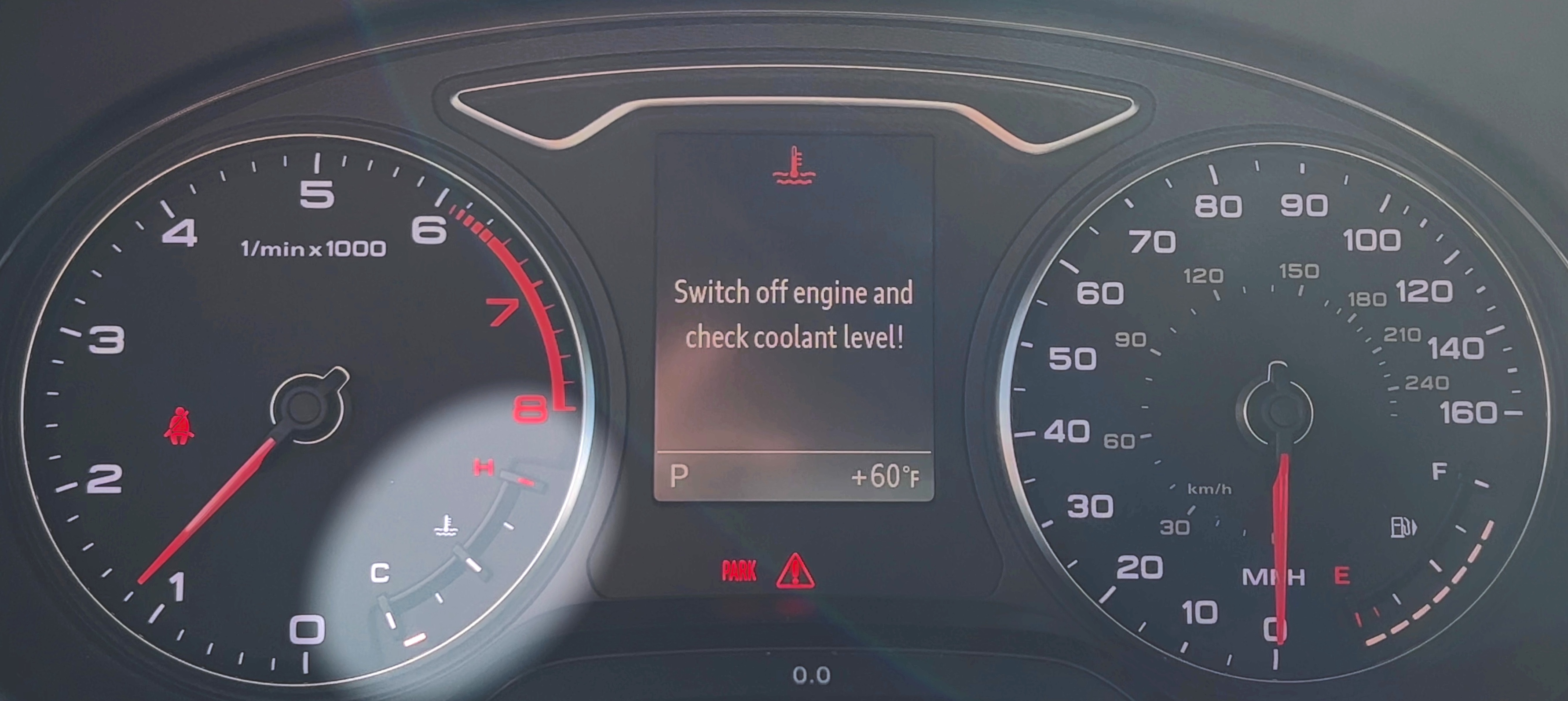How to Fix Low Coolant Temperature
To fix low coolant temperature, first check for a faulty thermostat and replace it if necessary. You should also check for any leaks in the cooling system and repair them as needed.
Low coolant levels can also cause low temperature, so check and top up the coolant if it’s low. Additionally, make sure that the radiator is functioning properly and not clogged or blocked. In some cases, a malfunctioning temperature sensor may be the issue, so consider having it checked and replaced if needed.
By addressing these potential issues, you can effectively fix low coolant temperature and ensure your vehicle operates at the proper temperature for optimal performance and efficiency.

Credit: www.firestonecompleteautocare.com
Common Signs Of Low Coolant Temperature
Low coolant temperature can lead to engine issues. Look out for signs like slow engine warm-up and poor heater performance. To fix it, check coolant levels, thermostat, and radiator for any problems. Proper maintenance is key to prevent potential damage.
Unexpectedly Cold Air From Heater
If you notice that the air blowing out of your car’s heater is unexpectedly cold, it could be a sign of low coolant temperature. One of the primary functions of the coolant in your car’s engine is to regulate the temperature and prevent overheating. When the coolant level is low, the heater core may not receive enough warm coolant to heat the air blowing into the cabin.
Engine Taking Longer To Warm Up
Another common sign of low coolant temperature is when your car’s engine takes longer than usual to warm up. The engine coolant circulates through the engine block, absorbing heat and helping to maintain an optimal operating temperature. If the coolant level is low, it takes longer for the engine to reach its normal operating temperature. This delay can negatively affect the performance of your vehicle and increase fuel consumption.

Credit: www.mattpopovich.com
Determining The Root Cause
Determining the root cause of low coolant temperature is crucial in keeping your vehicle running smoothly. By carefully evaluating the potential issues, you can effectively address the problem and prevent any further damage to your engine.
Check Coolant Level And Quality
Start by checking the coolant level in the reservoir. Make sure the engine is cool before removing the cap to prevent any burns. Use a coolant level tester to determine the level of coolant in the reservoir. Also, inspect the quality of the coolant. If it appears dirty or contaminated, it may need to be flushed and replaced.
Inspect Thermostat Operation
Next, inspect the thermostat operation. A malfunctioning thermostat can cause the engine to run at a lower temperature than normal. To check the thermostat, remove it from the engine and test it in a pot of boiling water. The thermostat should open as the water reaches boiling point, allowing the coolant to flow through the engine.
Steps To Fix Low Coolant Temperature
When your car’s coolant temperature is running lower than normal, it can be a sign of potential issues that need to be addressed. It’s important to take steps to fix low coolant temperature to ensure your vehicle runs properly and avoids any long-term damage. Here are some essential steps to address low coolant temperature in your car:
Top-up Coolant Levels
If your coolant temperature is running low, the first step is to check and top up the coolant levels in your car’s reservoir. Ensure the engine is cool before unscrewing the cap and adding a mixture of 50% coolant and 50% water to the specified level. Use a funnel to avoid spillage, and tighten the cap securely after topping up the fluid. Monitor the levels regularly to prevent further drops in the coolant level.
Replace Thermostat If Faulty
A faulty thermostat can cause low coolant temperature in your car. To replace the thermostat, locate your car’s thermostat housing and drain some coolant into a clean container. Remove the housing and replace the thermostat with a new one. Clean the gasket surfaces and install the new thermostat, ensuring the spring end goes toward the engine. Reconnect the housing, refill the coolant, check for leaks, and test the temperature to ensure the issue is rectified.

Credit: autolablibertyville.com
Additional Checks
When it comes to fixing low coolant temperature in your vehicle, there are a few additional checks that you can perform to ensure everything is in working order. These checks will help you identify any potential issues that may be causing the low coolant temperature, allowing you to address them effectively. In this section, we will discuss two crucial checks that you should carry out: checking for leaks in the cooling system and inspecting the radiator and water pump function.
Check For Leaks In The Cooling System
A common reason behind low coolant temperature is leakage in the cooling system. It is important to inspect the various components of the cooling system to identify any leaks. Leaks can occur in hoses, gaskets, radiator, thermostat housing, or even the water pump itself. Here’s how you can check for leaks:
- Visual Inspection: Start by visually inspecting the engine bay for any signs of coolant leakage. Look for wet spots, dampness, or a sweet smell indicating the presence of coolant. Pay close attention to the hoses, radiator, and connections.
- Pressure Test: Perform a pressure test to determine if there are any hidden leaks. This is done by using a pressure tester to pressurize the cooling system. If the pressure drops over time, it indicates a leak somewhere in the system.
Inspect Radiator And Water Pump Function
The radiator and water pump play a crucial role in maintaining proper coolant temperature. If either of them is not functioning correctly, it can lead to low coolant temperature. Here’s how you can inspect their function:
- Radiator Inspection: Check the radiator for any signs of damage or clogging. Look for bent fins, cracks, or debris blocking the airflow. Ensure that the radiator cap is in good condition and holding pressure.
- Water Pump Inspection: Inspect the water pump for any leaks or signs of damage. Check the drive belt tension to ensure proper rotation. You can also feel the water pump pulley for any wobbling or play.
By carrying out these additional checks, you will be able to identify and address any issues that may be causing the low coolant temperature in your vehicle. Remember to fix any leaks and ensure that the radiator and water pump are functioning properly. If the issue persists, it is advisable to consult a professional mechanic for further diagnosis.
Preventive Measures
Preventive Measures Regular Coolant System MaintenanceRegular Coolant System Maintenance
Regularly service your coolant system to avoid temperature issues.
Monitor Engine Temperature CloselyMonitor Engine Temperature Closely
Keep an eye on your engine temperature to detect any abnormalities.
End of HTMLFrequently Asked Questions On How To Fix Low Coolant Temperature
Can I Drive With Low Coolant Temperature?
Yes, you can drive with low coolant temperature, but it is not recommended. Low coolant can cause engine overheating and damage. It’s best to keep coolant levels within the recommended range to ensure optimum engine performance and prevent potential problems.
How Do You Fix Low Coolant Levels?
To fix low coolant levels, top up the coolant reservoir with a 50/50 mix of water and coolant. Check for leaks and repair as needed. Run the engine to ensure proper circulation and recheck the levels. If the issue persists, consult a professional for inspection and repairs.
How Do You Fix Coolant Over Temperature?
To fix coolant over temperature, check for leaks, ensure proper coolant levels, and replace the thermostat if necessary. Also, clean the radiator and ensure the cooling fans are working. If the issue persists, consult a professional mechanic for further diagnosis and repair.
What Coolant Temp Is Too Low?
Coolant temp that is too low depends on the vehicle, but generally below 160°F can cause poor engine performance and increased fuel consumption. It’s important to monitor and maintain the correct coolant temperature for optimal engine function.
How Can I Tell If My Coolant Temperature Is Low?
The coolant temperature gauge on your dashboard should indicate a lower-than-normal reading.
What Are The Common Causes Of Low Coolant Temperature?
Low coolant level, faulty thermostat, or a malfunctioning temperature sensor could be the culprits.
Why Is It Important To Fix Low Coolant Temperature Promptly?
Low coolant temperature can lead to engine damage, poor fuel efficiency, and compromised vehicle performance.
Conclusion
Maintaining the proper coolant temperature is crucial for the well-being of your vehicle. By following the steps outlined in this blog post, you can easily fix low coolant temperature issues and ensure optimal performance. Regularly checking coolant levels, inspecting the thermostat, and addressing any leaks or blockages will help you avoid costly repairs and maintain the longevity of your engine.
Remember, a well-regulated coolant system is the key to a smooth and efficient ride.



